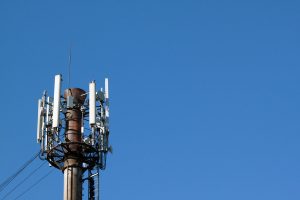When an officer attaches a video camera to a utility pole and uses it to monitor a suspect’s home continuously for several months, is that a “search” within the meaning of the Fourth Amendment? Or is it just the officer seeing what any passer-by might see, such that there is no intrusion on the suspect’s reasonable expectation of privacy? This issue has been a focal point of litigation since Carpenter v. United States, 585 U.S. ___, 138 S.Ct. 2206 (2018), which held that the long-term collection of historical cell site location information is so intrusive that it is a search, even though any individual piece of such data does not belong to the phone’s user and is not subject to a reasonable expectation of privacy. Whether the rationale of Carpenter extends to pole cameras has been addressed before on this blog, most recently here and here by Shea Denning. But there are a number of new cases in this area, which I have summarized below.
carpenter
Conducting Surveillance and Collecting Location Data in a Post-Carpenter World, Part I
Two years have passed since the Supreme Court held in Carpenter v. United States, 585 U.S. ___, 138 S.Ct. 2206 (2018), that the government carried out a Fourth Amendment search when it obtained historical cell site location information (CSLI) for the defendant’s phone from a wireless carrier. Relying in part on the view expressed by five concurring justices in United States v. Jones, 565 U.S. 400 (2012), that individuals have a reasonable expectation of privacy in the whole of their physical movements, the court determined that allowing the government access to at least seven days of historical cell-site records contravenes that expectation, even when the records are generated for commercial purposes and held by a third party.
The Carpenter majority characterized its decision as “a narrow one” and noted that it was not expressing a view on “real-time CSLI or ‘tower dumps,’” disturbing the traditional application of the third-party doctrine, or “call[ing] into question conventional surveillance techniques and tools, such as security cameras.” Id. at 2220. Dissenting justices, in contrast, characterized the court’s reasoning as “fractur[ing] two fundamental pillars of Fourth Amendment law,” and “guarantee[ing] a blizzard of litigation while threatening many legitimate and valuable investigative practices upon which law enforcement has rightfully come to rely.” Id. at 2247. (Alito, J., dissenting).
Lower courts have applied and distinguished Carpenter in a number of cases involving electronic surveillance and the obtaining of location and other types of information from third parties. This post, the first in a three-part series, summarizes post-Carpenter decisions relating to surveillance by pole camera and tower dumps. The second post in this series will examine post-Carpenter rulings on the obtaining of real-time surveillance through GPS or CSLI. The third post will consider the use of cell site simulators and the obtaining of other information about a person’s on-line activities or accounts from third parties. After reading all three, you can decide for yourself whether Carpenter’s progeny has bolstered the majority’s view of its limitations or has borne out the dissent’s warnings regarding its reach.
Carpenter, Search Warrants, and Court Orders Based on Probable Cause
In Carpenter v. United States, __ U.S. __, __ S.Ct. __, 2018 WL 3073916 (June 22, 2018), the Supreme Court ruled that when the government obtains long-term, historical cell site location information (CSLI) about a person, it conducts a Fourth Amendment search and so “the Government must generally obtain a warrant supported by probable cause before acquiring such records.” I previously blogged about Carpenter here.
That post referenced the possibility of using a court order supported by probable cause in lieu of a search warrant. The idea behind that suggestion was that some of the statutory execution procedures associated with search warrants are an awkward fit for this type of order. For example, G.S. 15A-252 requires that an officer executing a warrant must “read the warrant and give a copy of the warrant application . . . to the person to be searched, or the person in apparent control of the premises . . . to be searched.” In a case involving CSLI, is the officer supposed to read the warrant to Verizon? Or to the suspect, even though he or she will not be present at the search? But since I wrote my prior post, I’ve been asked several times whether using a court order based on probable cause in place of a search warrant would really be permissible. This post attempts to answer that question.
Supreme Court Rules that Obtaining Cell Site Location Information Is a Search
On Friday, the Supreme Court issued a long-awaited opinion in Carpenter v. United States. The Court held that when law enforcement obtains long-term cell site location information from a suspect’s service provider, it conducts a Fourth Amendment search that normally requires a warrant. Although the majority opinion states that it “is a narrow one,” the dissenting Justices and some scholars see it as a seismic shift that may have many aftershocks. I’ll summarize the case and then use former Secretary of Defense Donald Rumsfeld’s famous approach to address the “known knowns,” the “known unknowns,” and the “unknown unknowns” after Carpenter.